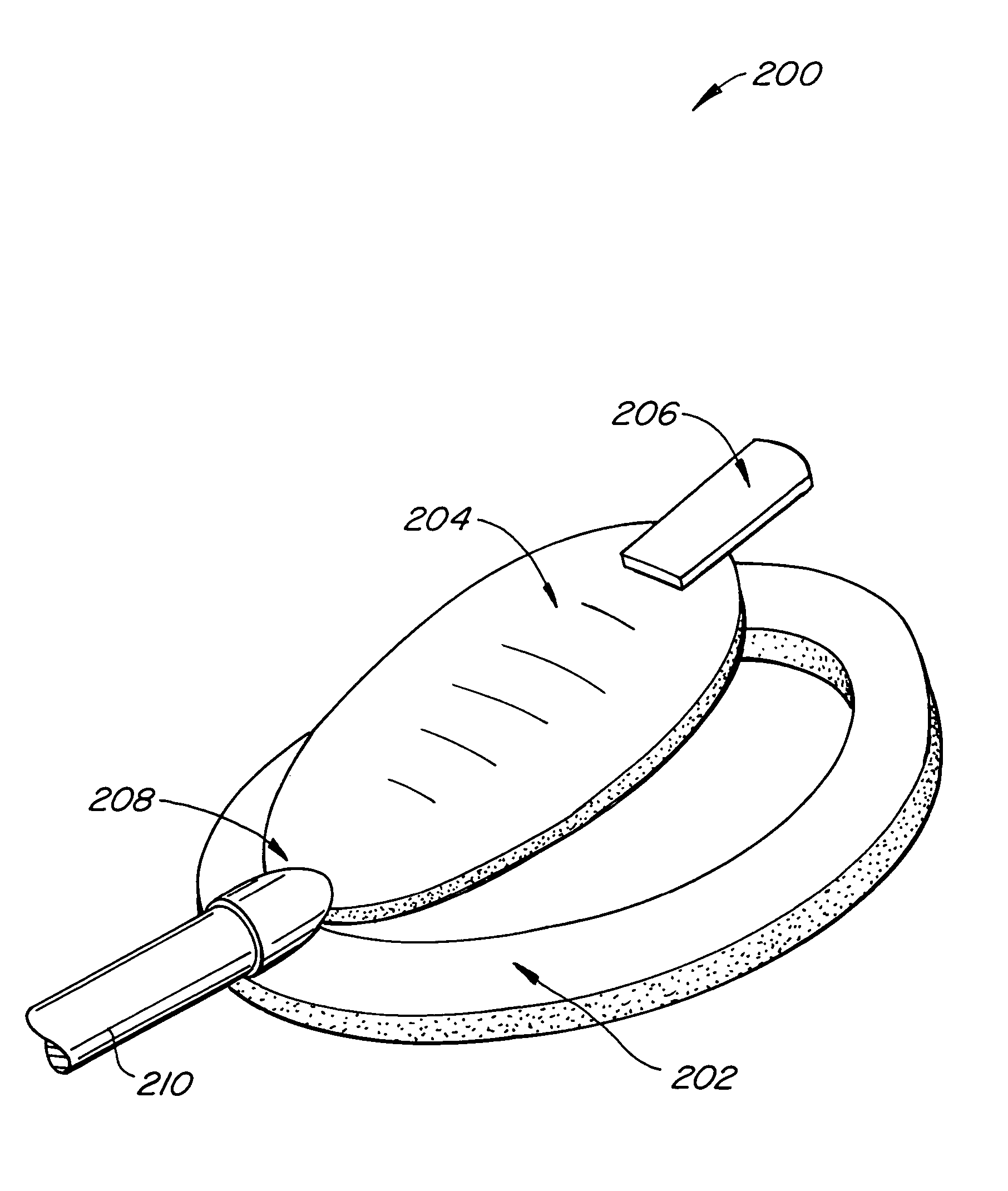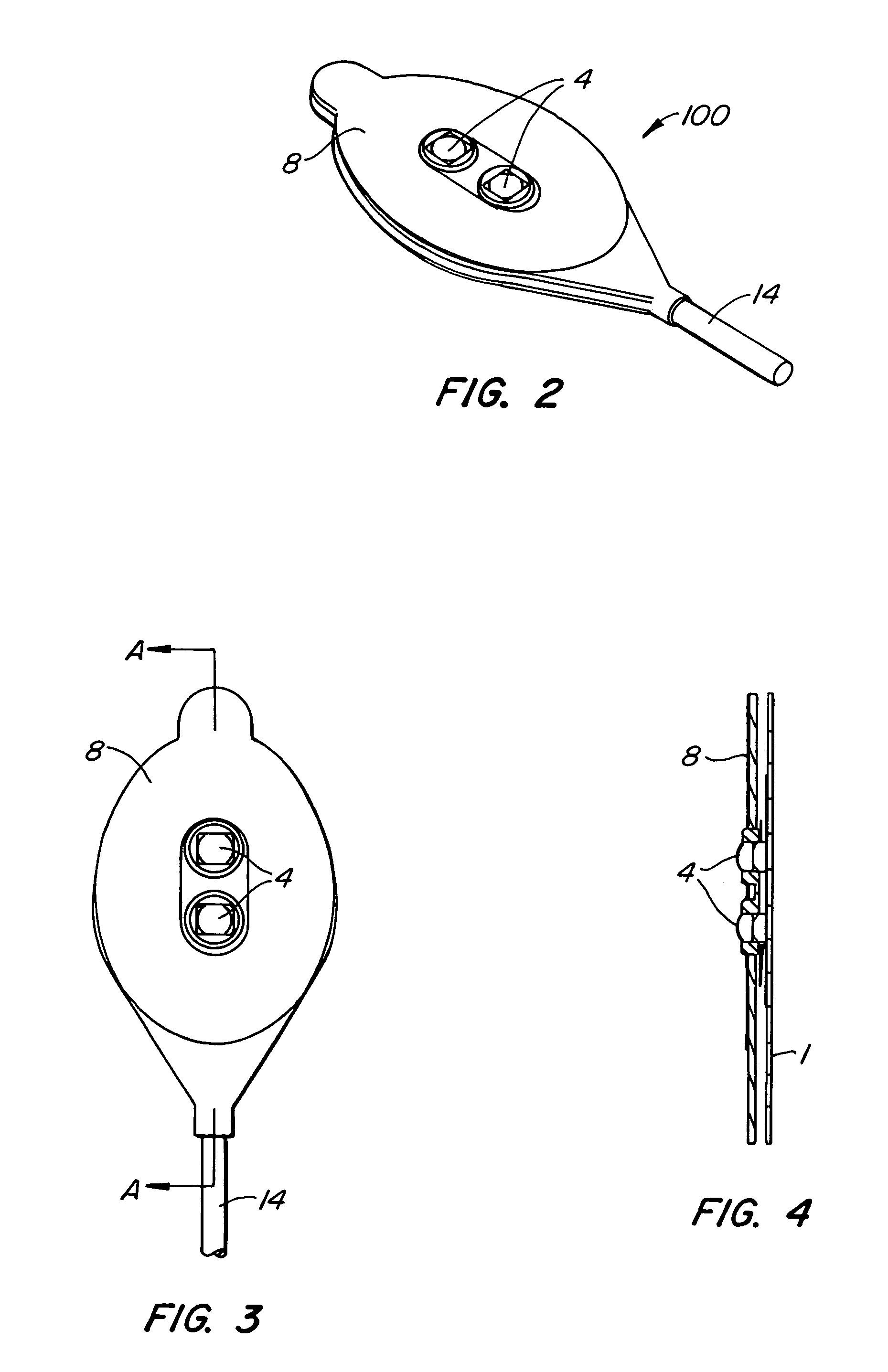Stacked adhesive optical sensor
a technology of optical sensors and adhesives, applied in the field of optical sensors, can solve problems such as adverse interference with measurement accuracy, and achieve the effect of prolonging the useful life of the produ
- Summary
- Abstract
- Description
- Claims
- Application Information
AI Technical Summary
Benefits of technology
Problems solved by technology
Method used
Image
Examples
Embodiment Construction
[0019]FIG. 1 is a perspective disassembled view of the sensor 100 according to an embodiment of the present invention. The sensor includes a sensor top 1 or cover layer which is exposed to the ambient environment when the sensor is attached to a patient's skin. In one embodiment, the cover layer 1 is fabricated of a common PVC foam. Alternately, the cover layer 1 is fabricated of a urethane foam material and particularly, an open cell breathable urethane foam such as, for example, the PORON™ family of urethanes commercially available from the Rogers corporation of Connecticut. A mask layer 2 preferably including a metalized plastic film is adhesively attached to the cover layer 1. In a preferred embodiment, the metalized masked layer 2 is an aluminized polypropylene film with a synthetic adhesive layer for attachment to the cover layer 1. The metalized mask layer 2 is so placed to prevent, minimize or reject secondary light from interfering with the photodetector 7. As used herein, ...
PUM
| Property | Measurement | Unit |
|---|---|---|
| thick | aaaaa | aaaaa |
| mechanical | aaaaa | aaaaa |
| flexible | aaaaa | aaaaa |
Abstract
Description
Claims
Application Information
 Login to View More
Login to View More - R&D
- Intellectual Property
- Life Sciences
- Materials
- Tech Scout
- Unparalleled Data Quality
- Higher Quality Content
- 60% Fewer Hallucinations
Browse by: Latest US Patents, China's latest patents, Technical Efficacy Thesaurus, Application Domain, Technology Topic, Popular Technical Reports.
© 2025 PatSnap. All rights reserved.Legal|Privacy policy|Modern Slavery Act Transparency Statement|Sitemap|About US| Contact US: help@patsnap.com



